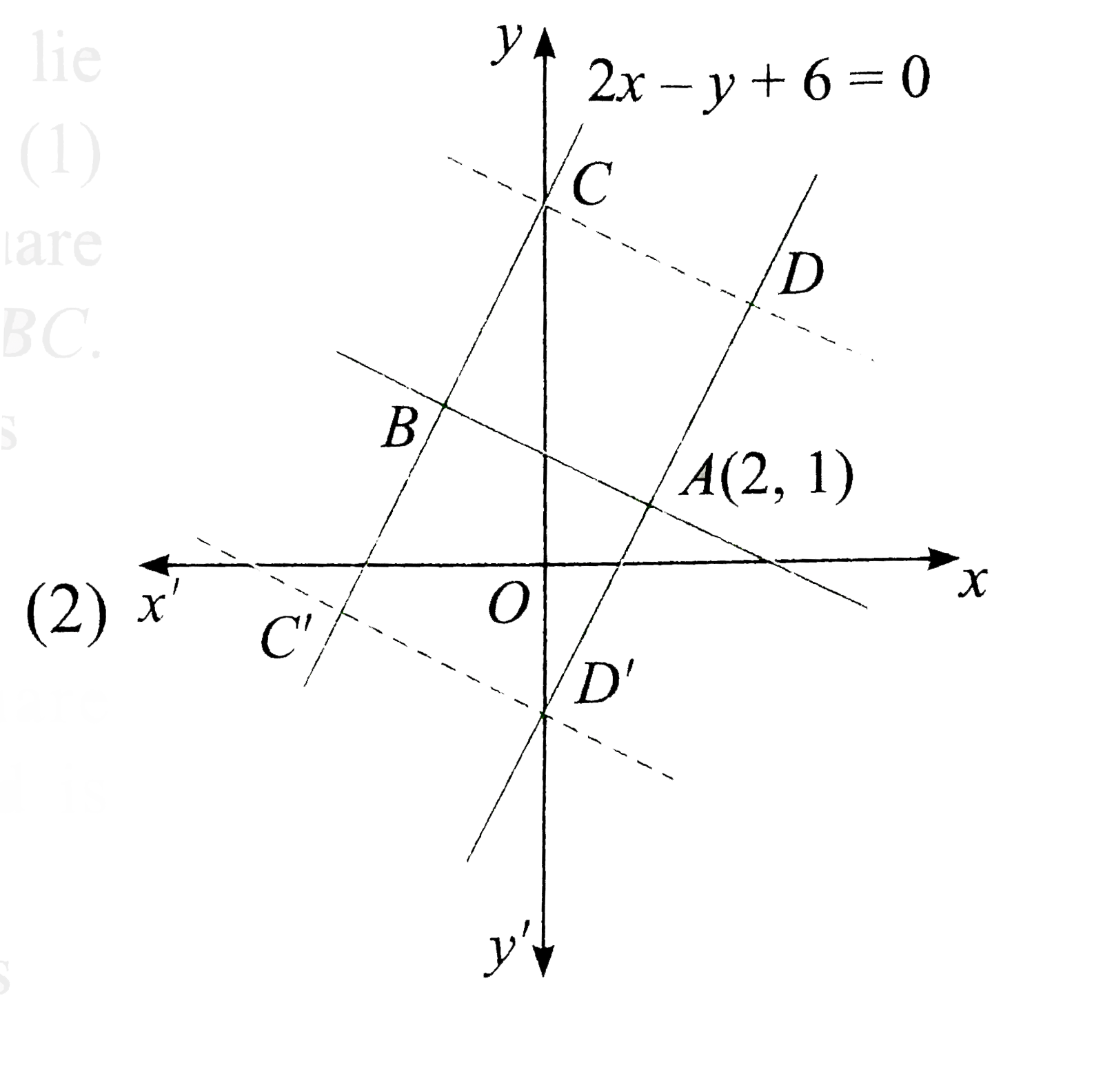If one side of the square is 2x−y+6=0, then one of the vertices is (2,1) . Find the other sides of the square.

Vertex A(2,1) does not lie on the line BC=2x-y+6=0 (1)
Hence, one of the side of the square passing through A is parallel to BC.
Therefore, the equation of AD is
y-1=2(x-2)
or2x−y−3=0 (2)
Another side AB of the square is passing through (2,1) and is perpendicular to BC.
Therefore, the equation of AB is
y−1=−12(x−2)
orx+2y−4=0 (3)
The third side is parallel to AB, which has equation
x+2y+c=0 (4)
Now, the distance between the lines BC and AD is 9/√5.
Therefore, the distance between the lines (3) and (4) is
|C+4|√5=9√5
∴c=5or−13 Therefore, the equation of the third side is
x+2y+5=0 (≡C'D')
or x+2y−13=0(≡CD)
Topper's Solved these Questions
- STRAIGHT LINESBOOK - CENGAGECHAPTER - STRAIGHT LINESEXERCISE - Exercise 2.1
23 Videos
- STRAIGHT LINESBOOK - CENGAGECHAPTER - STRAIGHT LINESEXERCISE - Exercise 2.2
4 Videos
- STRAIGHT LINEBOOK - CENGAGECHAPTER - STRAIGHT LINEEXERCISE - Multiple Correct Answers Type
8 Videos
- THEORY OF EQUATIONSBOOK - CENGAGECHAPTER - THEORY OF EQUATIONSEXERCISE - JEE Advanced Previous Year
9 Videos
Similar Questions
Knowledge Check
If one of the diagonals of a square is along the line x=2y and one of its vertices is (3, 0), then its sides through this vertex are given by the equations (A) y−3x+9=0,3y+x−3=0 (B) y+3x+9=0,3y+x−3=0 (C) y−3x+9=0,3y−x+3=0 (D) y−3x+9=0,3y+x+9=0
Ay−3x+9=0,3y+x−3=0By+3x+9=0,3y+x−3=0Cy−3x+9=0,3y−x+3=0Dy−3x+3=,3y+x=9=0
The center of a square is at the origin and its one vertex is A(2,1). Find the coordinates of the other vertices of the square.
View SolutionPerimeter of a square and a rectangle is same. If a side of the square is 15cm one side of the rectangle is 18cm, find the area of the rectangle.
View SolutionTwo squares have sides xcm and (x+4) . The sum of their areas is 656cm2 . Find the sides of the squares.
View SolutionIf the length of a diagonal of square is 6cm. Find the length of the side of the square.
View SolutionIna square one diagonal is 16cm .Find the side of the square
View SolutionThe equation of one diagonal of a square is 2x+y=6 and its one vertex is (4,3). Find the equation of other diagonal.
View SolutionA square and a rectangle have equal area. If one side of the rectangle is of length numerically equal to the square of the length of the side of the square then the other side of the rectangle is
View Solution
